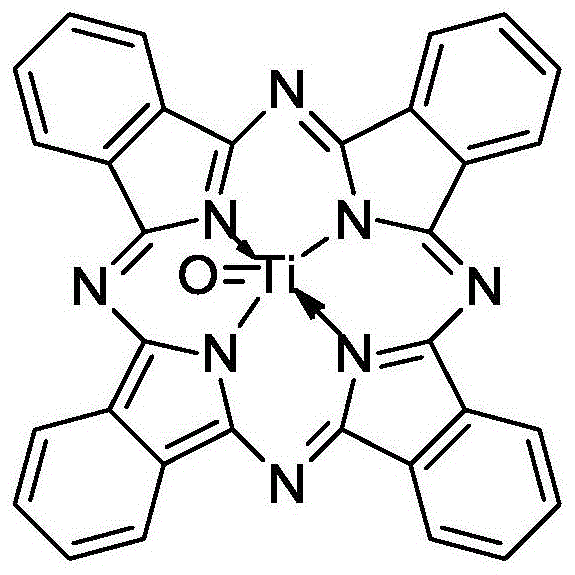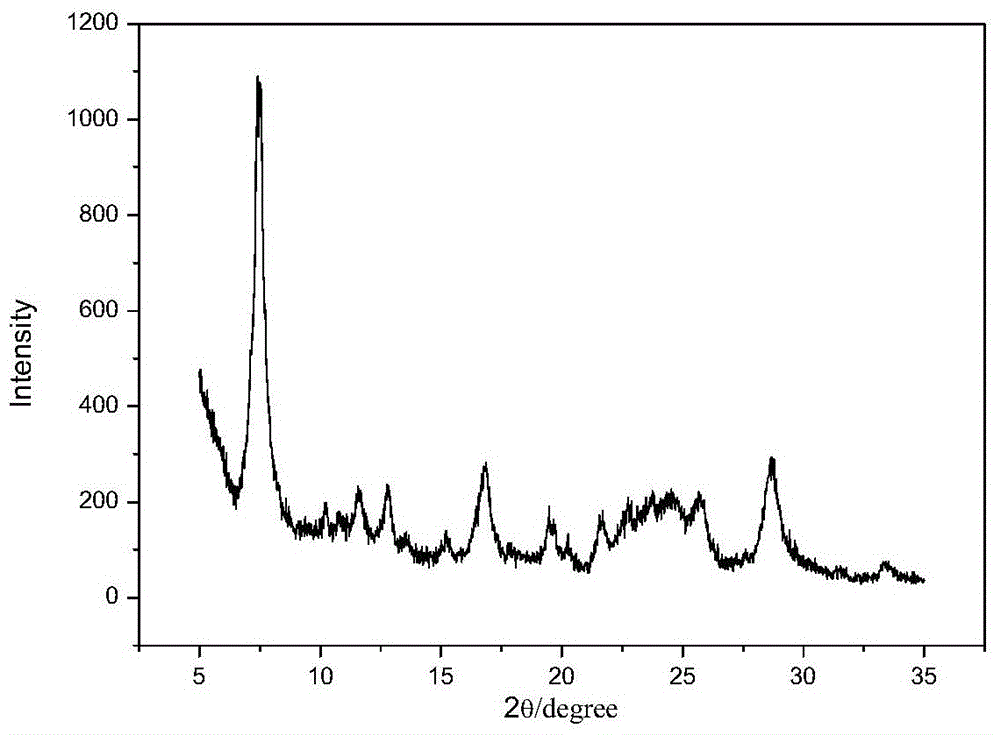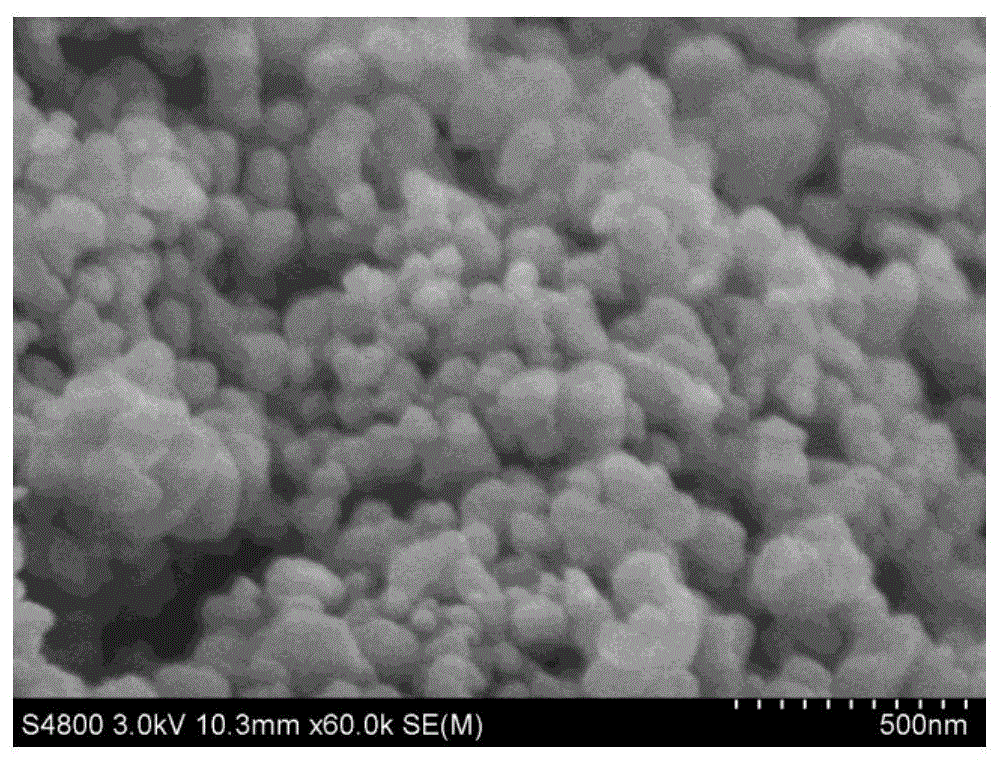Preparation method of polymorphic photosensitive tiopc nanoparticles and its application in organic photoconductors
A nanoparticle, photosensitive technology, applied in nanotechnology, organic chemistry, titanium organic compounds, etc., to achieve the effect of simplifying the washing process, small particle size, and high sensitivity
- Summary
- Abstract
- Description
- Claims
- Application Information
AI Technical Summary
Problems solved by technology
Method used
Image
Examples
preparation example Construction
[0033] 1. The method for preparing α-TiOPc nanoparticles provided by the invention comprises the steps in sequence:
[0034] 1) Dissolve a certain mass of crude titanyl phthalocyanine in concentrated sulfuric acid with a mass fraction of 98% at -5°C to 5°C, and then drop it into the continuously stirring -15°C at a rate of 1mL / min to 60mL / min In transition solvent at ~5°C;
[0035] 2) After the dropwise addition, adjust the heat preservation temperature to -15~5℃, and continue to stir for 1~72 hours to obtain a blue emulsion, add low-carbon alcohol to it, let it stand, wait for layers, separate the liquid, and use deionized Water is repeatedly extracted until the water phase is neutral;
[0036] 3) Separate the organic phase, add a precipitant to it, and let it stand to make the TiOPc nanoparticles settle;
[0037] 4) Pour off the supernatant, filter, wash the filter cake with methanol, then beat with deionized water, and freeze-dry to obtain α-TiOPc nanoparticle powder;
...
Embodiment 1
[0042] Embodiment 1: prepare α-TiOPc nanoparticles
[0043]Dissolve 1g of crude titanyl phthalocyanine in 60mL of concentrated sulfuric acid with a mass fraction of 98%, and then add it dropwise at a rate of 1mL / min to 10mL of butanol, 20mL of water and 30mL of o-dichlorobenzene under constant stirring at -15°C In the transformation solvent formed, after the dropwise addition is completed, continue to maintain the temperature of the transformation system at -15°C, continue to stir for 1 hour, extract the mixed solution with water, extract all the phthalocyanine titanium into the o-dichlorobenzene phase, and separate the liquids to obtain the o- Dichlorobenzene phase, 100mL ethanol was added thereinto, the TiOPc nanoparticles were settled, filtered, and the filter cake was beaten with water, and vacuum freeze-dried to obtain blue powder particles, which were analyzed by X-ray powder diffraction ( figure 2 ) proves that the crystal form is α-TiOPc (characteristic diffraction an...
Embodiment 2
[0044] Embodiment 2: Preparation of α-TiOPc nanoparticles
[0045] Dissolve 1 g of crude titanyl phthalocyanine in 30 mL of concentrated sulfuric acid with a mass fraction of 98%, and then add it dropwise at a rate of 60 mL / min to 1000 mL of ethanol, 1000 mL of water, 500 mL of o-dichlorobenzene and 500 mL of In the transformation solvent composed of dichloromethane, after the dropwise addition is completed, continue to maintain the temperature of the transformation system at 5°C, continue to stir for 72 hours, extract the mixed solution with water, extract all the phthalocyanine titanium into the organic phase, and separate the liquids to obtain the organic phase , add 1000mL butanol to it, make the TiOPc nanoparticles settle, filter, beat the filter cake with water, and freeze-dry in vacuum to get blue powder particles. X-ray powder diffraction analysis proves that the crystal form is α-TiOPc (characteristic diffraction angle 2θ is 7.5°, 25.3°, 28.6°), and the particle size ...
PUM
| Property | Measurement | Unit |
|---|---|---|
| particle diameter | aaaaa | aaaaa |
| particle diameter | aaaaa | aaaaa |
| particle diameter | aaaaa | aaaaa |
Abstract
Description
Claims
Application Information
 Login to View More
Login to View More - R&D
- Intellectual Property
- Life Sciences
- Materials
- Tech Scout
- Unparalleled Data Quality
- Higher Quality Content
- 60% Fewer Hallucinations
Browse by: Latest US Patents, China's latest patents, Technical Efficacy Thesaurus, Application Domain, Technology Topic, Popular Technical Reports.
© 2025 PatSnap. All rights reserved.Legal|Privacy policy|Modern Slavery Act Transparency Statement|Sitemap|About US| Contact US: help@patsnap.com



